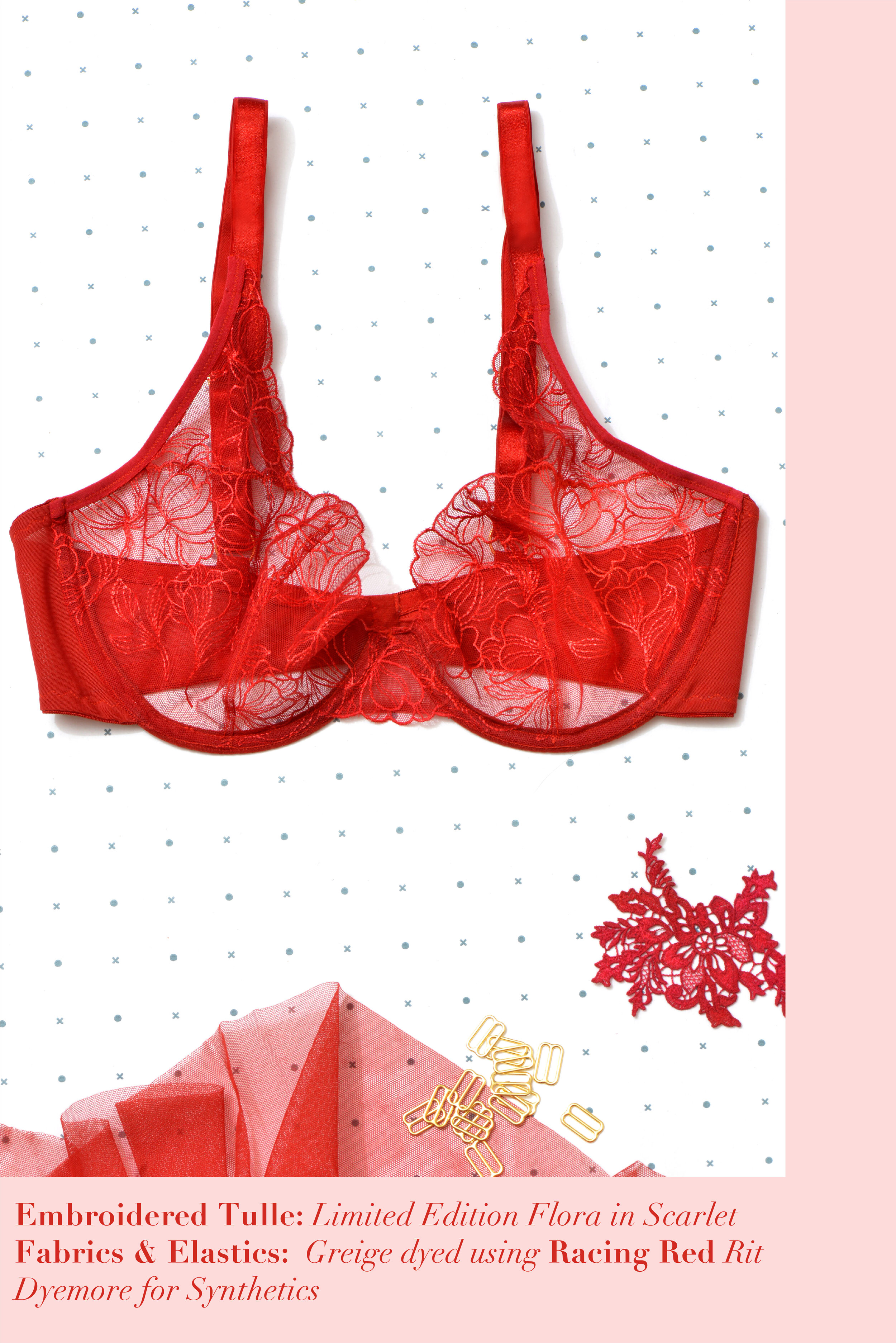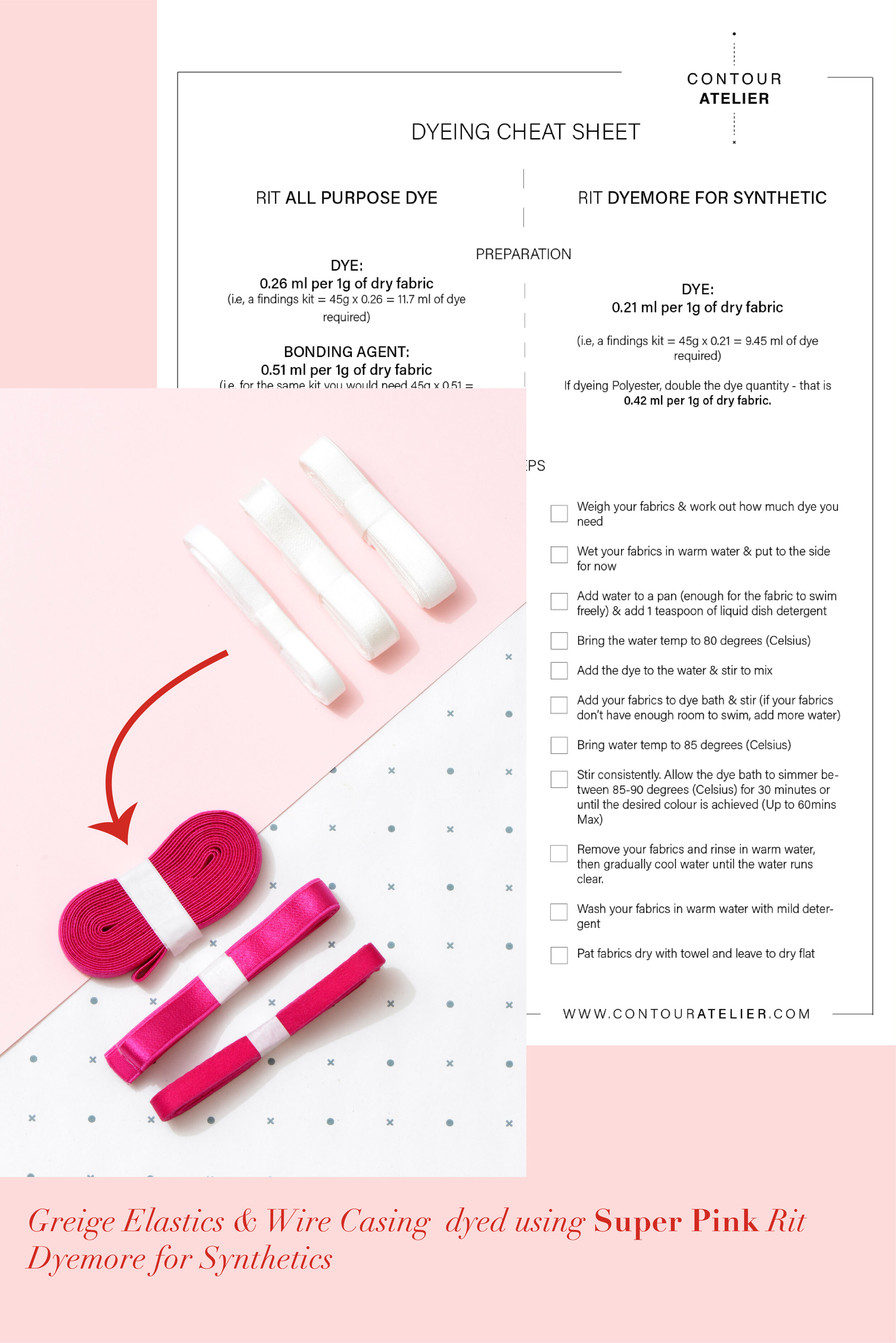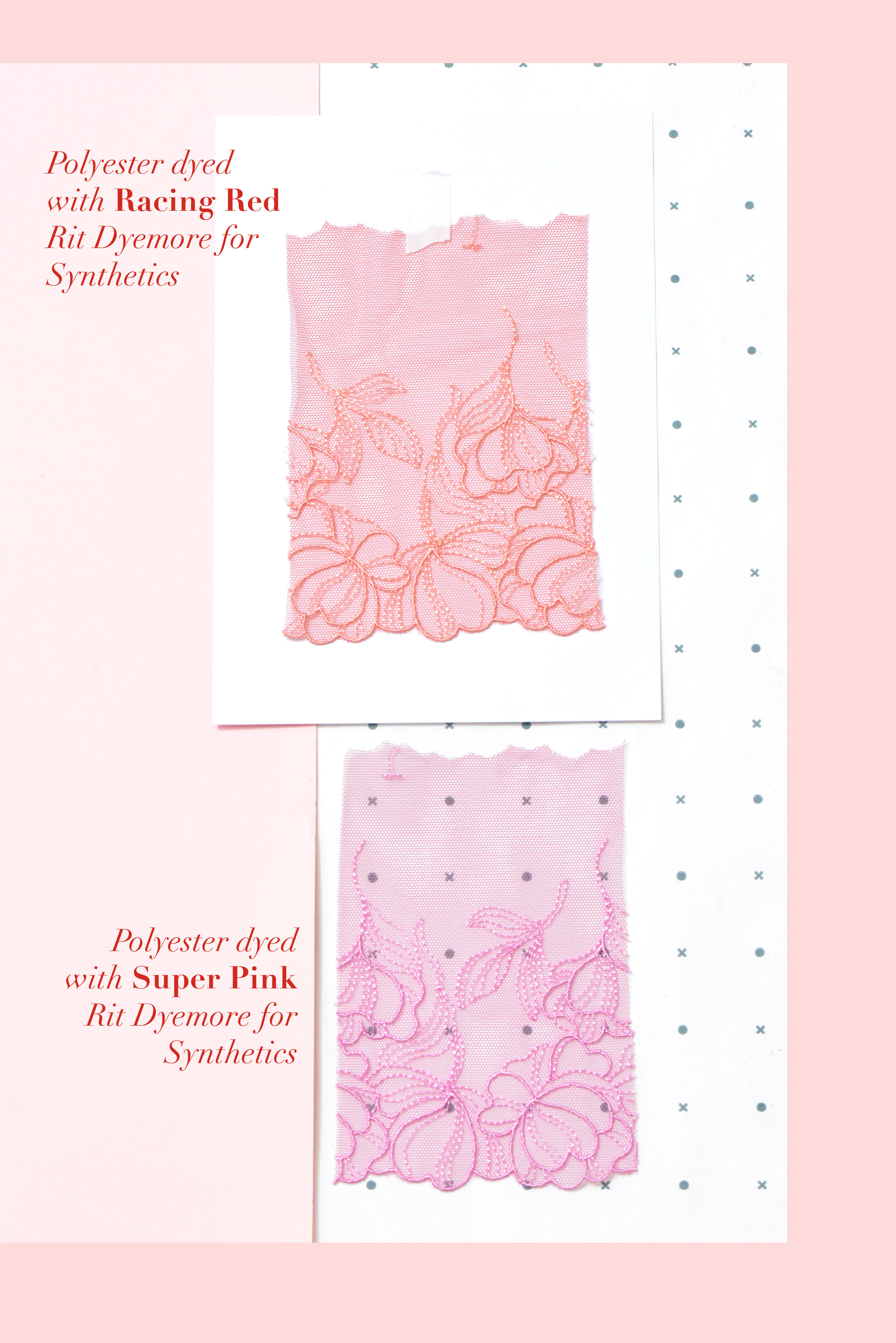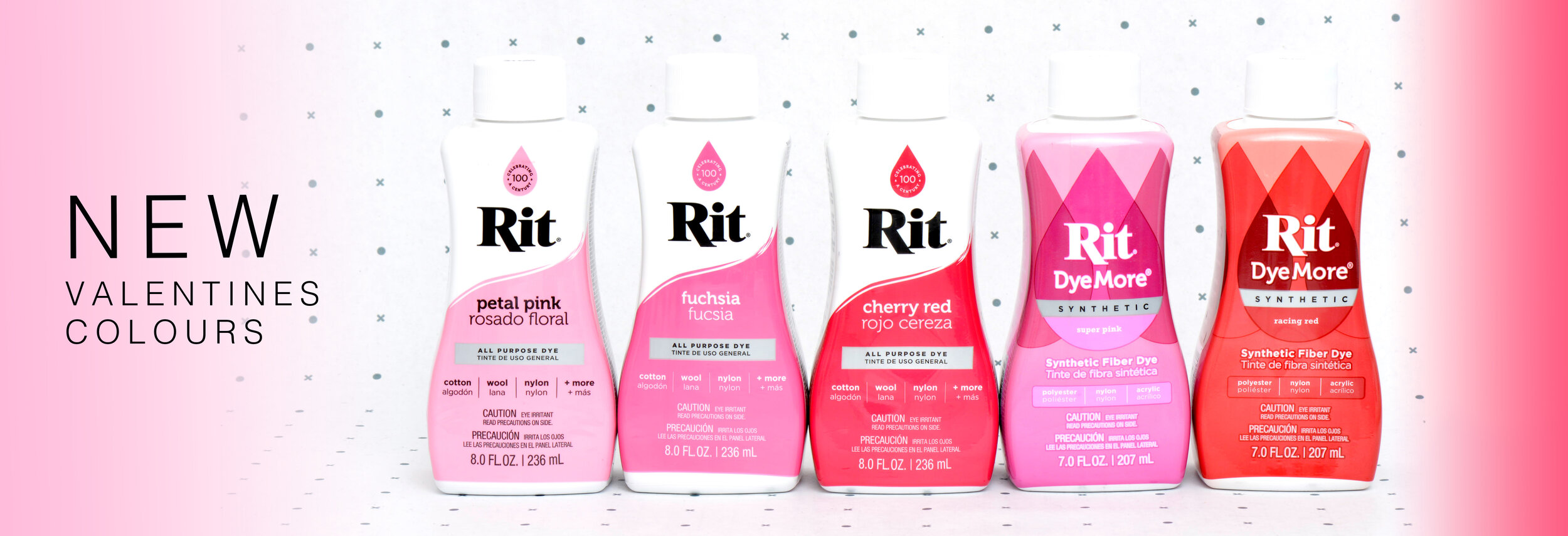The Easy Way to Dye Your Elastics and Components
Happy Valentines Weekend!
Over the past few weeks, so many lingerie brands have been promoting their red-and-pink-hued lingerie collections! Feeling inspired, I decided to do a little dyeing and add something more colourful to my lingerie collection…
I love dyeing but know that, especially for first timers, dyeing fabrics, elastics and components, such as wire casing and hooks & eyes, can be daunting. A quick google search can bring up countless videos & blog posts, all using different dyes, tools/methods and it can be hard to know where to start!
That’s why, when sourcing for Contour Atelier, I wanted to make it as easy as possible for beginners!
For this reason, I only stock 2 types of dye from a well known and easy to find brand - Rit All Purpose Dye & Rit Dyemore for Synthetics. These two dyes will dye everything you need them to - from silk, cotton and viscose to nylon and polyester.
You do not need any specialist dyes for lingerie materials. When searching ‘dyes for elastics’, the term ‘acid dye’ comes up a lot but what many people don’t know is that Rit All Purpose Dye actually IS an acid dye. For some unknown reason RIT just don’t advertise it as such… probably because the term ‘acid dye’ makes you think of dangerous acid - when it’s really just referring to the type of bonding agent needed - Vinegar (for dying silk & nylon) & citric acid (when dying cotton).
Additionally, to make things easier, I sourced greige, nylon based fabrics for the materials that you most need when making lingerie - such as Tulle, Powermesh, Stretch Mesh, Stabliser/Lining, Elastics, Fold Over Elastic, Wire casing, Closures etc… and you can easily check a product’s composition in each product description.
As greige material is undyed & ubleached, it provides a much richer colour and takes dyes more easily and, as the materials are all nylon based, it is even easier to colour match all your components.
I would argue that nylon is the easiest fibre to dye, It works great with either All Purpose Dye or Dyemore for Synthetics. The only difference is the colours available (there are more shades available in the All Purpose Dye Range) and, with All Purpose dye, you need to add a bonding agent (citric acid or white vinegar), whereas, with Dyemore for Synthetics, you don’t need to add anything extra to the dye bath.
When dyeing, the colour you get depends on how much dye you use, how long it is in bath and what the fabric composition is. With both Rit dyes you don’t need to worry about how much water you use, you just need enough so the fabric can swim freely but the colour you get isn’t effected by the amount of water in the pot.
When working with Rit Dye the hardest thing is translating their instructions into metric and working out how much dye you need when working with such small quantities.
The instructions just say: “For every pound of dry fabric (i.e, two adult large t-shirts) use 1/2 bottle (4 oz) of dye…”
So to make things easy for you (and myself) I put together this useful PDF Dyeing Cheat Sheet which you can download for free here
The only tools you need are:
Kitchen scales
A stove top
A medium or large pan (do not use this again for food)
Tongs (to stir the pot and pick up fabrics)
Thermometer
For my Valentines inspired lingerie I chose to try Rit Cherry Red (All Purpose Dye), Rit Super Pink (Dyemore for Synthetics) and Rit Racing Red (Dyemore for Synthetics).
I am really pleased with how they all turned out!
The Cherry Red had a slight blue undertone making it my preferred shade of red but
the Racing Red, with a more orange undertone, matched the Limited Edition Flora lace in Scarlet so much better! The Super Pink findings turned out perfect too.
As a little experiment I added a swatch of embroidered tulle to both the Super Pink and Racing Red dye baths as both dyes work on polyester. The end result was a much softer colour - a peach shade from the Racing Red and a dusky pink from the Super Pink. This was because I didn’t double the dye quantity as the instructions say to do for polyester fabrics. So if you want to colour match your Nylon findings & polyester embroideries you would definitely need to double the dye quantity.
As you can see dyeing is much easier than it looks!… and once you have tried it once, it’s hard not to become hooked.





